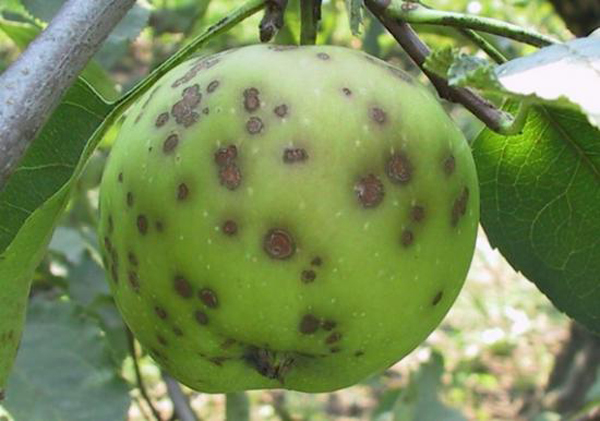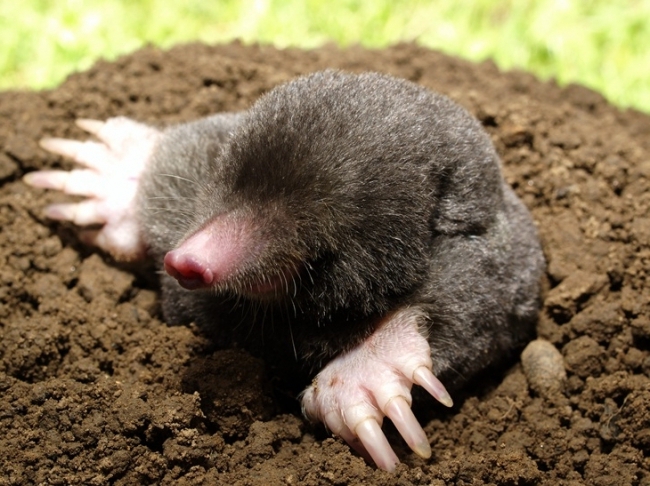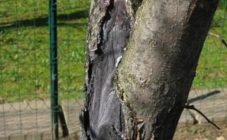Content:
A common reason for a decline in apple productivity is unexpected fruit drop. This phenomenon is usually caused by negative environmental factors. Eliminating their influence allows you to fully reveal the yield potential inherent in the variety and culture.
Diseases and pests
One of the reasons why the apple tree sheds fruit is the negative effects of harmful insects and ailments. So, the moth, hitting the culture, provokes the development of fruit rot, as a result of which fruit shedding occurs. Fallen fruits must be cut with a knife. If there is a worm inside the apple, then this pest is to blame.
Other pests that can harm the apple tree include:
- honeydew;
- hawthorn;
- apple blossom beetle;
- green aphid.
The apple tree is also negatively affected by various diseases. Among them, the most dangerous are:
- scab;
- black cancer;
- rust;
- powdery mildew;
- bitter pitting, etc.
Reasons for dumping fruits
Falling apples from a tree can appear in different forms. Each of them has its own specific characteristics, causes and methods of struggle.
Why does the apple tree shed fruits before they ripen
The apple tree is able to independently regulate the level of fruiting on the tree. It is generally accepted that only 5-10% of all flowers will yield a harvest, and everything else is discarded before ripening. This is the main answer to the question of why apples fall off an apple tree if they are very small. However, if there is no harvest left on the tree after that, then the reason lies in something else.
During dry periods, plants often lack water. In this case, the apple tree moves the available liquid from the fruit and transfers it to the foliage. As a result, the fruits become shriveled, dry quickly and fall off, not having time to gain an acceptable mass.
Another possible reason is lack of nutrients. To fully ripen on time, the apple tree must be provided with nitrogen, phosphorus, potassium and trace elements, but not overfed. Food should be delivered through the use of both mineral fertilizers and organic matter.
Sometimes there are situations when a crop that has reached technical ripeness crumbles. Seeds have already formed inside the fruit, but the taste of such apples remains at a low level. For the fruits to ripen normally, it is necessary to send the fruits for ripening. The duration of this period in autumn varieties is 7-14 days, and in winter it stretches up to 1-2 months. This is usually not the case with early varieties.
Why does the ovary fall off the apple tree
One of the main reasons why the ovary crumbles on an apple tree is a violation of the water regime. June can be both dry and excessively rainy. Weather and climatic conditions are not always possible to correctly and accurately predict, as a result of which the plant can be either overdried or overmoistened.In any of these cases, the ovary of the apple tree turns black and crumbles.
Heavy rains, winds, hail can harm the plant. Weather cataclysms force a significant part of the ovaries to be thrown off, and in severe cases they break the shoots along with them. This also deprives the apple tree of a significant proportion of the harvest, since the ovary dies before reaching the stage of maturity.
Fertilizer deficiency is another reason for removing the ovary.
Falling apple flowers
Falling flowers usually occur in the second half of May, when flowering ends, for natural reasons. Strong winds can speed up the process, making it premature. In this situation, in the absence of color, full-fledged pollination will not occur, which will subsequently negatively affect the productivity of the plantations.
Falling foliage
A leaf from an apple tree can crumble in the first half of summer. This does not allow the plant to sufficiently prepare for the winter, as a result of which the tree runs the risk of being seriously affected by the cold and dying. The most common cause is damage to the root system.
Apple tree roots are often affected by pests. The most dangerous among them are:
- mice;
- May beetles;
- moles.
Premature fall of foliage occurs when there is a lack of moisture. This is most often found on sandy soils, which are practically unable to retain liquid. The tree has to shed its leaves to survive the drought.
Moisture stagnation at the root system also causes the appearance of fallen leaves. This is usually observed in plantations located in lowlands. Under such conditions, groundwater usually lies close, and after precipitation rain water accumulates there. Gradually, the roots get wet and the foliage falls off in June.
Wintering conditions are also important. Thus, severe frosts with a weak and absent snow cover severely damage the roots. In the next growing season, the foliage usually begins to fall off early, and in advanced cases it does not bloom at all.
The shedding of foliage can also occur under the direct action of harmful insects. The apple moth and baby are able to defolate plants prematurely.
Prevention
To protect the plant from pests and, in particular, from the moth, it is necessary to treat the plantings with an appropriate pesticide. Fallen apples must be collected and burned along with the dead tree bark. Trapping belts are installed on the plant.
In addition to pesticides, folk remedies are also widely used. So, infusions for spraying are widespread, prepared on the basis of the following plants:
- dandelion;
- tobacco;
- tops of tomatoes;
- garlic.
For planting, it is necessary to select the most suitable varieties that have winter hardiness, resistance to the main unfavorable environmental factors. Ideally, the variety should be zoned in the region of cultivation. Special requirements apply to the planting site, as well as to the quality of the planting material.
Watering should be moderate but sufficient. Usually, the plant needs three irrigations per season, in which it is possible to wet the soil about 50 cm deep.
The culture must be fully nourished. For this, during the period of apple formation, the plantations are fed with 40 g of ammonium nitrate diluted in 10 liters of water, as well as 6-8 kg of humus for each tree. In the middle of the growing season, emphasis is placed on feeding with a high content of potassium and phosphorus:
- 15-20 g of potassium sulfate per 10 liters of water;
- 10-15 g of potassium monophosphate per 10 liters of water.
Before the beginning of winter, the young plant is properly prepared for this period. It is necessary to remove fallen leaves and mummified remains of apples from the site. Then the stem of the plant is tightly wrapped with a covering material and fixed with pieces of twine.
Protecting the apple tree from premature crop dropping is one of the most important tasks in crop cultivation. Knowing why the fruit falls off the apple tree and why this or that remedy is used, you can prevent a similar situation, which will not only allow you to get fruits this year, but also leave a reserve for future growing seasons.














